

September 2023 Edition!
AIU News + Essays + Education + Culture + Science + Technology + Art + Design + Body + Mind + Environment + Human Rights + Animal Rights + Anthropology + About AIU


AIU News + Essays + Education + Culture + Science + Technology + Art + Design + Body + Mind + Environment + Human Rights + Animal Rights + Anthropology + About AIU




| Cristiano Titiano Chizeca Bachelor of Information Engineering Computer Science Angola |
Henry Antonio Fumero Blandin Bachelor of Information Technology Telecommunications Argentina |
Guaicaipuro José Jiménez Jiménez Master of Science Public Health Aruba |
Bartlomiej Cech Master of Science Biotechnology and Project Management Australia |
Vinod Kumar Nath Doctor of Science Natural Resource Management Australia |
Willy Mukungi Amisi Doctor of Science Public Health Botswana |
| Saleh A. Bashir Elkakli Master of Science Electrical and Electronics Engineering Canada |
Paul Djideti Doctor of Management Leadership and Management Chad |
Carlos Alberto Cardona Echeverry Post-Doctorate of Education Education Colombia |
Gabriel Marin De La Hoz Bachelor of Science Electrical Engineering Colombia |
Alix G. Sanchez Tiria Doctor of Education Education Dominican Republic |
Karla Dharina Velazquez Ortiz Bachelor of Science Internetworking and Computing Technology Dominican Republic |
| Antonia Santa Valdez Soriano Doctor of Education Educational Leadership Management Dominican Republic |
Santa Sánchez Doctor of Education Educational Research Dominican Republic |
Jerónimo Carrión Alcívar Bachelor of Science Psychology Ecuador |
Mari Luz Mibuy Ndong Nsee Master of Science Public Health Equatorial Guine |
Mabuza Siyabonga Fortune Master of Science Psychology Eswatini |
Markos Wolde Suloro Doctor of Management Leadership and Management Ethiop ia |
| Collins Kesse Doctor of Philosop hy Human Resource Management Ghana |
José Filiberto Franco Hernández Doctor of Information Technology Digital Transformation Guatemala |
Damian Edmund Burke Post-Doctor of Philosop hy Educational Psychology Ireland |
Robert Denzin Hamilton Certificate of Science Industrial Engineering Jamaica |
Ahmed Al Ameedi Doctor of Business Administration Business Administration Latvia |
Nisrine Al Awar Bachelor of Business Administration Business Administration Leba non |
| Fanny Madalitso Kondowe Master of Science Communications Malawi |
Martha E. Riba Espinosa de los M. Doctor of Science Biology Mexico |
Cathleen Deelie Doctor of Biology Marine Biology Namibia |
Jazmin Elizabeth Jaakkola Gomez Bachelor of International Business International Business Nicaragua |
Cecilia Mbinya Maundu Bachelor of Education Early Childhood Education Nigeria |
Olumide Oluwatobi Dawodu Bachelor of Science International Business Management Nigeria |
| Awakan Oluwafemi Samson Doctor of Science Information Technology Nigeria |
Abdulrahman Kitilly Hudu Doctor of Philosop hy Human Resources Management Nigeria |
Morenikeji Oluwaseunfunmi Bakare Bachelor of Science Psychology Nigeria |
Andi Kayoma Osawota Doctor of Legal Studies Literary Practical Legal Proceedings Nigeria |
James-Wisdom Aboiralo Abhulimen Doctor of Science Mass Media and Communication Nigeria |
Gyal Y. Gapani Doctor of Philosop hy Public Financial Management Nigeria |
| Priscilla Kaivavore Bachelor of Science Health Science Pap ua New Guinea |
Queren Rosa Quaglio Ferreira Bachelor of Nutrition Higher Education in Nutrition Portugal |
Zaida M. Rivera Gonzalez Doctor of Education Educational Leadership Puerto Rico |
Juan Antonio Rodriguez III Doctor of Science International Relations Puerto Rico |
Bârdan V. Marius - Vasile Doctor of Science Physics, Chemistry and Biology Romania |
Emmanuel Hakizimana Doctor of Science Environmental Science Rwanda |
| Joseph D'Alembert Bizimana Master of Highway Engineering Construction Management Rwanda |
Blessings Joylene Cole Bachelor of Communications Communication Sierra Leone |
Visuanathan Gopalan Master of Science Public Health Singapo re |
Samantha Abiola Philips Master of Science Social Work Sint Maar |
Nasra Abdulsamad Mohamud Master of Nutrition Nutrition Science Somalia |
Nasima Joseph Bachelor of Science Business Management St. Lucia |
| Renna Jankie - Francis Master of Science Public Health St. Lucia |
Guy-Ann C. Joseph-Charles Bachelor of Science Educational Psychology St. Lucia |
Nan Hlaing Hlaing Moe Doctor of Science Psychology and Leadership Thailand |
Recep Durul Bachelor of Arts Business Adm |
Sarmila Sinha Doctor of Mental Health Stress Management United Kingdom |
Maria Estrella Ayecaba Micha Oye Master of Business Administration Finance and Accounting USA |
| Henry Obasessam Ofem Bachelor of Management Business Management USA |
Claudio Jorge Bonaventura Doctor of Science Public Health USA |
John Charles Lawson Doctor of Science Family, Crime and Deviance USA |
Maribel Eyang Aseme Nsang Master of Business Administration Business Administration USA |
David Mayor Escobar Bachelor of Business Administration Digital Marketing USA |
Michael D. Reynolds Doctor of Education Educational Leadership USA |
| Raoul Arief Ahmadali Master of Science Business Management US A |
Namangolwa Mwanaumo Doctor of Business Administration Business Administration Zamb |
Getrude Chimfwembe Doctor of Philosop hy Early Childhood Mathematics Zambia |
Lilato Mwitha Doctor of Business Administration Business Administration and Finance Zambia |
||


Our present as human beings
seem to be on a path
in which the great development
of science and coexistence
show opposite paths.
What happens to us that we
see the great wave of heat, the
conflicts in relation to the governance
of the towns and these
and those don’t understand
each other? The Tower of Babel
has risen!
With everything we have
done as human beings, we
must find a path of peace, for
coexistence.
First, what happens to us
that there is so much world
conflict? What generates the
world in which we are living?
We knew that global warming
would be a serious problem;
we already have it:
• There are very high temperatures everywhere
and wildfires.
• Democracies are becoming
governments that don’t have
freedoms.
• Armies becoming rulers.
• More weapons for peace.
• Conferences and Conferences
where much is said, but few
are the concrete agreements.
It seems that they don’t seek
to live in peace but quite the opposite. Why are many human
beings so easy to convince
in positions that are clearly
radical? What element is necessary
for people to know the
why, how and why of the facts?
That element is EDUCATION.
“Education, science, culture
and the free circulation of ideas
and knowledge throughout the
world are not only fundamental
needs of humanity but are
also laying the solid foundations
of a future peace.” UNESCO.
2021. Celebration of the 75th anniversary
of UNESCO. Our vision of peace.
https://www.unesco.org/en/vision
UNESCO- United Nations Educational,
Scientific and Cultural Organization.
Living in peace is not a gift
to the wealthiest, the prettiest,
the one with the most power.
Peace is not the tranquility of
the graves because nothing can
be taken from anyone there.
We know peace as coexistence.
Peace seems to be the goal
that all human beings should
seek. We are witnessing that
no matter how much money
you have, it doesn’t mean that
these people live comfortably,
live in peace.
Those who are rulers, no
matter how much power they
have, aren’t happy because
they have peace with that power. Here and there we are
witnessing conflicts.
What is conflict? Conflict is a
situation in which the parties
have opposing objectives
and don’t give in to reach an
agreement to find the elements
that mean win for each group.
The current interests or
conflicts have their solution in
arms in order to obtain profits
that the law and reason don’t
give to those who support
them; we are talking about
wars and changes of State by
armies. How to achieve peace
in such situations?
UNESCO tells us: “Since
wars are born in the minds of
women and men, it is in the
minds of women and men that
the bulwarks of peace must be
erected.” UNESCO. 2021. Celebration
of the 75th anniversary of UNESCO. Our
vision of peace. https://www.unesco.
org/en/vision
What can be changed in the
mind is what is known about
the object that it’s and that
happens by teaching others
through education. Manipulation
so that others believe
in what others want is not
education because it doesn’t
show what the objects are: it’s
convinced with false elements
about what the object is.
Education is to change
the mind of human beings by
demonstrating with true elements
what the object is.
That is why UNESCO says in
relation to the world of the
absence of peace due to the
violence that many suppose is
not resolved, because human
beings are violent by nature,
because for many it is not
explicable that with so much
science and development of
forms of production it is not
possible to find a way to live
with each other.
UNESCO says: “Violence
is not inscribed, therefore,
in the genes of the human
being and its appearance is
due to historical and social
causes. The notion of ‘primal
violence’ is a myth and war is
not an element closely linked
to the human condition, but
the product of societies and
their corresponding cultures.”
UNESCO- Courier- One world, multiple
voices- The origins of violence.
https://es.unesco.org/courier/2020-1/
origenes-violencia What elements do we lack in
this society? The lack to which
we have reached the conclusion
is that the missing element is
education.
“Education is vital to achieve
acceptance and respect for all
regardless of skin color, gender
or national, ethnic or religious
identity, ...” UNESCO. Build peace in
the minds of men and women. https://
es.unesco.org/node/251157
Formal education is
schooled; Informal education
are the habits and customs of
behavior where culture and
respect for others enter.
Education is that formal
education because there we
also find the elements of informal
education.
We have, to learn through
our abilities and accompaniment
of those who know and
work in the best of discourses,
science.
About peace UNESCO says:
“Peace is essentially respect
for life. Peace is humanity's
most precious asset. Peace
is not only the end of armed
conflicts. Peace is a behavior.
Peace is a deep adhesion of the
human being to the principles
of freedom, justice, equality
and solidarity among all
human beings. Peace is also
a harmonious association between
humanity and the environment.
UNESCO. Build peace in the
minds of men and women. UNESCOhttps://
es.unesco.org/node/251157 Peace must be the most
precious asset of human beings
so that their life and that of the
planet are the space for coexistence
that we all need.
Hence the great Gandhi,
Mohandas Karamchand Gandhi,
1869-1948, from India, a
fighter for peace, said that:
There is no way to
peace; the peace is
the way.
When Gandhi says that peace
is the way, it means that peace
actions must always be carried
out to achieve it. Carrying out negative actions
doesn’t achieve peace.
You have a program at Atlantic
International University
(AIU): Do your assignments
to learn.
Study to carry out actions
that are of wellbeing
for any human
being or for the life of
our planet.
Always be an example
for others.
If we learn to live with peace
as actions, this world has to
change. We can’t, we must not
remain as if nothing happened
because that is where our end is.
BIBLIOGRAPHY. UNESCO. 2021. Celebración del 75 aniversario de la
UNESCO. Nuestra visión de la paz. Retrieved from: https://www.unesco.
org/es/vision | UNESCO. UNESCO: Construir la paz en la mente de los
hombres y las mujeres. Retrieved from: https://es.unesco.org/node/251157
| UNESCO- 1980-1981. La Violencia y sus causas. Retrieved from:
https://unesdoc.unesco.org/ark:/48223/pf0000043086_spa | UNESCO - Correo-
Un solo mundo, voces múltiples- Los orígenes de la violencia.
Retrieved from: https://es.unesco.org/courier/2020-1/origenes-violencia

There are many intrusion
identification methods
and these include a semisupervised
fuzzy clustering
algorithm based on isomeric
distance and sample density
for network intrusion detection
(Kylili et al., 2018), but this
method is constrained by the
data sample dimension, and it
is difficult to effectively deal
with the problem of large scale
network intrusion signal recognition.
To address the above
problems, based on deep research
of hidden Markov model
intrusion detection method,
combined with the characteristics
of global optimization of
genetic algorithm, Wu (2018)
used the genetic algorithm
to optimize the model for the
sensitive problem of hidden
Markov model to initial
parameters, and proposed an
identification method based
on hidden Markov model for
ship communication network
intrusion signal. Li (2018) worked on a collaborative
intrusion detection method of
marine distributed network
based on clustering with the
aim to reduce the long delay in
the current marine distributed
network which had an intrusion
detection method based
on support vector machine.
There are many intrusion
identification methods
and these include a semi-supervised fuzzy
clustering algorithm based on
isomeric distance and sample
density for network intrusion
detection (Kylili et al., 2018), but
this method is constrained by
the data sample dimension,
and it is difficult to effectively
deal with the problem of large
scale network intrusion signal
recognition. Evaluation of Artificial
Intelligence paradigms
for network detection and prevention
systems Napanda, K.,
et al (2015) studied the different
Artificial Intelligence (AI)
techniques that can be used in
support of Intrusion (Anomaly
and Misuse) Detection Systems
to provide better Intrusion
Detection and Prevention. The
research shed some light on
techniques such as Machine
Learning (ML), Neural Network
and Fuzzy Logic and how they
can be coupled with Intrusion
Detection System to detect attacks
on private networks.
Since most of the Intrusion Detection System are signature
based, to develop such a
sophisticated Intrusion Detection
System that can detect
and prevent already known
and predict unknown attacks
is technically unfeasible. The
Network Intrusion Detection
System captures packets
traversing through the network
using span port or network
taps in order to detect and flag
any suspicious activity (Napanda,
K., et al, 2015, p.1). The Intrusion
Detection Systems (IDS) are
known to observe the network
traffic, analyze it and identify
possible anomalies or unauthorized
access to the network
behavior, with some of the IDS
responding to the intrusion to
protect the computer network.
Artificial Neural Networks
can be trained with the network
traffic data, then we
use these neural networks
to recognize the patterns in
network data. Once all the
Bayesian network models are
built (trained on network traffic)
and those networks are
ready for predicting attacks in
incoming network traffic, then
the test data divided by inferential
analyses to each Bayesian
network to classify in the
attacks. Furthermore, backpropagation
network is used
successfully in network intrusion
detection since backpropagation
is used for learning
and this will help the Intrusion
Detection System to build and
learn profiles of anomalous
behaviors. The research shed
some light on techniques on
Machine Learning (ML), Neural
Network and Fuzzy Logic and
how they can be coupled with
an intrusion detection and
prevention system to detect attacks
on private networks.
Since most of the Intrusion
Detection Systems are
signature based, to develop
such a sophisticated Intrusion
Detection System that
can detect and prevent already
known and predict unknown
attacks is technically unfeasible.
Therefore, introducing an
intrusion response mechanism
that works together with the
IDS allows comprehensive protection,
that not only secures
the network systems but also
create a unique agent that
makes an automated decision
in an unknown environment.
Instead of combining signature
detection techniques and
anomaly detection techniques,
some other hybrid systems
fuse multiple anomaly detection
systems according to some
specific criteria considering
that the detection capability for
each anomaly detection technique
is different. An automated
machine learning algorithm
for Network Intrusion Detection
and Prevention Systems
(IDPS) serves as a successful
tool for defending our network,
as it uses two layers: A. The
primary layer provides us with
the opportunity to monitor
the network and to detect a
breach in our system, based on
machine learning dimensions
reduction and classification
techniques.
Artificial Neural Networks
can be trained with the network
traffic data, when we
use these neural networks
to recognize the patterns in
network data. Once all the
Bayesian network models are
built (trained on network traffic)
and those networks are
ready for predicting attacks in incoming network traffic,
then the test data divided by
inferential analyses to each
Bayesian network to classify
in the attacks. Furthermore,
these algorithms ought to
be used in the basic network
intrusion detection and
prevention system: Alternative
improved solutions include
the use of machine learning
algorithms specifically Artificial
Neural Networks (ANN),
Decision Tree C4.5, Random
Forests and Support Vector
Machines (SVM).
REFERENCES. KYLILI, A., Fokaides, P.A., Ioannides, A., and Kalogirou, S.,
(2018). Environmental assessment of solar thermal systems for the industrial
sector, Journal of Cleaner Production, 176, 99-109. | LI, X., (2018). Collaborative
intrusion detection method for marine distributed network, In: Liu,
Z.L. and Mi, C. (eds.), Advances in Sustainable Port and Ocean Engineering,
Journal of Coastal Research, Special Issue No. 83, pp. 57–61, Coconut Creek
(Florida), ISSN 0749-0208. | NAPANDA, K., Shah, H., and Kurup, L., (2015).
Artificial Intelligence Techniques for Network Intrusion Detection, International
Journal of Engineering Research & Technology (IJERT), ISSN: 2278-
0181, IJERTV4IS110283 www.ijert.org, Vol. 4 Issue 11, November-2015.
 Over time, even facts we consider
steadfast truths can change. People
used to think doctors could forgo
washing their hands before surgery.
Knowledge is ever-evolving. Other facts
might have been taught incorrectly
because the truth is more nuanced than
grade-school students can understand.
The facts below probably changed since
your school days, or were taught to you
the wrong way. Re-educate yourself.
1. THEN: Five (or three) kingdoms of
classification exist. NOW: There might
be as many as eight kingdoms.
Depending when you grew up, your
middle school science teacher probably
lectured about three main kingdoms
of life —animals, plants, and
bacteria (monera)— or five, including
fungi and protists, too. Either way,
we’ve expanded our classification of life since then. The more species we
find and analyze, the more complex
labeling life becomes. In addition to
the five kingdoms above, we now know
of archaea, previously thrown under
monera. Archaea superficially look
like other one-celled organisms called
eubacteria, but they’re completely different.
Even larger systems exist which
further divide eubacteria into two more
kingdoms or separate chromista from
all the other protists. In the U.S., however,
we stick with six: plants, animals,
protists, fungi, archaebacteria, and
eubacteria.
2. THEN: Diamond is the hardest substance.
NOW: Ultrahard nanotwinned
cubic boron nitride is the hardest
substance. We’ve known about two
substances ...
Read full text:
Over time, even facts we consider
steadfast truths can change. People
used to think doctors could forgo
washing their hands before surgery.
Knowledge is ever-evolving. Other facts
might have been taught incorrectly
because the truth is more nuanced than
grade-school students can understand.
The facts below probably changed since
your school days, or were taught to you
the wrong way. Re-educate yourself.
1. THEN: Five (or three) kingdoms of
classification exist. NOW: There might
be as many as eight kingdoms.
Depending when you grew up, your
middle school science teacher probably
lectured about three main kingdoms
of life —animals, plants, and
bacteria (monera)— or five, including
fungi and protists, too. Either way,
we’ve expanded our classification of life since then. The more species we
find and analyze, the more complex
labeling life becomes. In addition to
the five kingdoms above, we now know
of archaea, previously thrown under
monera. Archaea superficially look
like other one-celled organisms called
eubacteria, but they’re completely different.
Even larger systems exist which
further divide eubacteria into two more
kingdoms or separate chromista from
all the other protists. In the U.S., however,
we stick with six: plants, animals,
protists, fungi, archaebacteria, and
eubacteria.
2. THEN: Diamond is the hardest substance.
NOW: Ultrahard nanotwinned
cubic boron nitride is the hardest
substance. We’ve known about two
substances ...
Read full text:
 Regardless of label, experts say that
everyone is looking for something
similar: reassurance that they’re doing
the right thing.
Dolphin parent. It means setting
guidelines for children to provide
stability. But It’s also important to allow
enough room for them to learn on
their own.
Eggshell parent. When your kids feel
like they have to tiptoe around you.
Showing instability, mood swings and
outbursts around children puts them
on edge. This can lead to anxiety and
people-pleasing tendencies even into
adulthood.
Lighthouse parent. These parents
offer help to their kids, but also let
them succeed or fail on their own. They
encourage kids to try a new hobby or
set a firm bedtime, but then step back and let them execute it on their own to
boost their confidence.
Snowplow parent. Also “lawnmower”
or “bulldozer” parenting. It’s when
parents aim to remove any obstacle
their child faces so that they don’t have
to experience any sort of disappointment,
pain or failure.
Silky, Crunchy and Scrunchy parents.
Silky parents are all about the modern
conveniences that make parenting
easier: disposable diapers, using the TV
as a babysitter. A crunchy parent usually
goes for the “natural” option: cloth
diapers, homemade baby food. Part
silky and part crunchy is known as the
“scrunchy parent.” ...
Read full text:
Regardless of label, experts say that
everyone is looking for something
similar: reassurance that they’re doing
the right thing.
Dolphin parent. It means setting
guidelines for children to provide
stability. But It’s also important to allow
enough room for them to learn on
their own.
Eggshell parent. When your kids feel
like they have to tiptoe around you.
Showing instability, mood swings and
outbursts around children puts them
on edge. This can lead to anxiety and
people-pleasing tendencies even into
adulthood.
Lighthouse parent. These parents
offer help to their kids, but also let
them succeed or fail on their own. They
encourage kids to try a new hobby or
set a firm bedtime, but then step back and let them execute it on their own to
boost their confidence.
Snowplow parent. Also “lawnmower”
or “bulldozer” parenting. It’s when
parents aim to remove any obstacle
their child faces so that they don’t have
to experience any sort of disappointment,
pain or failure.
Silky, Crunchy and Scrunchy parents.
Silky parents are all about the modern
conveniences that make parenting
easier: disposable diapers, using the TV
as a babysitter. A crunchy parent usually
goes for the “natural” option: cloth
diapers, homemade baby food. Part
silky and part crunchy is known as the
“scrunchy parent.” ...
Read full text:
 A new measurement of the strong
nuclear force, which binds protons
and neutrons together, confirms previous
hints of an uncomfortable truth:
We still don’t have a solid theoretical
grasp of even the simplest nuclear systems.
To test the strong nuclear force,
physicists turned to the helium-4
nucleus, which has two protons and
two neutrons. When helium nuclei are
excited, they grow like an inflating balloon
until one of the protons pops off.
Surprisingly, in a recent experiment,
helium nuclei didn’t swell according
to plan: They ballooned more than
expected before they burst. A measurement
describing that expansion, called
the form factor, is twice as large as
theoretical predictions. “The theory should work,” said Sonia
Bacca, a theoretical physicist and an author
of the paper describing the discrepancy,
which was published in Physical
Review Letters. “We’re puzzled.”
The swelling helium nucleus, researchers
say, is a sort of mini-laboratory
for testing nuclear theory because
it’s like a microscope —it can magnify
deficiencies in theoretical calculations.
Physicists think certain peculiarities in
that swelling make it supremely sensitive
to even the faintest components
of the nuclear force —factors so small
that they’re usually ignored. How much
the nucleus swells also corresponds to
the squishiness of nuclear matter ...
A new measurement of the strong
nuclear force, which binds protons
and neutrons together, confirms previous
hints of an uncomfortable truth:
We still don’t have a solid theoretical
grasp of even the simplest nuclear systems.
To test the strong nuclear force,
physicists turned to the helium-4
nucleus, which has two protons and
two neutrons. When helium nuclei are
excited, they grow like an inflating balloon
until one of the protons pops off.
Surprisingly, in a recent experiment,
helium nuclei didn’t swell according
to plan: They ballooned more than
expected before they burst. A measurement
describing that expansion, called
the form factor, is twice as large as
theoretical predictions. “The theory should work,” said Sonia
Bacca, a theoretical physicist and an author
of the paper describing the discrepancy,
which was published in Physical
Review Letters. “We’re puzzled.”
The swelling helium nucleus, researchers
say, is a sort of mini-laboratory
for testing nuclear theory because
it’s like a microscope —it can magnify
deficiencies in theoretical calculations.
Physicists think certain peculiarities in
that swelling make it supremely sensitive
to even the faintest components
of the nuclear force —factors so small
that they’re usually ignored. How much
the nucleus swells also corresponds to
the squishiness of nuclear matter ...
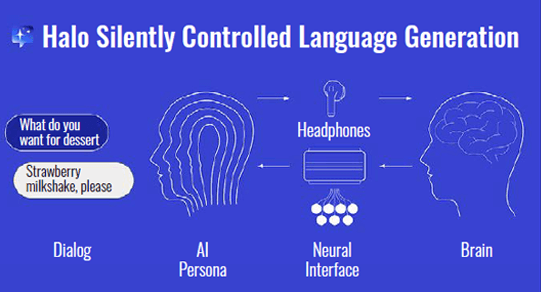 Unbabel’s core mission —allowing
enterprises to understand and
be understood by their customers in
dozens of languages— long ago led the
company to think outside the “box” to
develop several projects in-house ... to
explore other ways to communicate. ...
“We had the idea of looking at brainto-
communication interfaces,” Vasco
Pedro, founder and CEO says. ... Unbabel’s
innovation team, led by Paulo Dimas,
VP of Product Innovation, looked
into the way our brains evolved. ...
Unbabel’s team hit on the idea of
using an EMG system. EMG (electromyography)
measures muscle response
or electrical activity in response to a
nerve’s stimulation of the muscle. EMG
devices are commonplace and trivial. ...
Unbabel dubbed its invention “Halo” (after “halogram”). An app runs on the
wearer’s phone that enables access to
a central hub for receiving the communication
and enables communication
with the LLM [large language model, a
specialized type of artificial intelligence]
and responses. The platform is pulling
the OpenAI ChatGPT 3.5 right now. ...
Unbabel is now working with the
Champalimaud Foundation in Lisbon,
Portugal, which works on advanced
biomedical research and clinical care
in the field of ALS. Clearly, though,
the system could end up being used
in other scenarios, such as Cerebral
Palsy. The need for better interfaces for
patients who cannot speak is ongoing.
Right now, so-called “Alternative and
Augmentative Communication” (AAC)
products ...
Read full text
Unbabel’s core mission —allowing
enterprises to understand and
be understood by their customers in
dozens of languages— long ago led the
company to think outside the “box” to
develop several projects in-house ... to
explore other ways to communicate. ...
“We had the idea of looking at brainto-
communication interfaces,” Vasco
Pedro, founder and CEO says. ... Unbabel’s
innovation team, led by Paulo Dimas,
VP of Product Innovation, looked
into the way our brains evolved. ...
Unbabel’s team hit on the idea of
using an EMG system. EMG (electromyography)
measures muscle response
or electrical activity in response to a
nerve’s stimulation of the muscle. EMG
devices are commonplace and trivial. ...
Unbabel dubbed its invention “Halo” (after “halogram”). An app runs on the
wearer’s phone that enables access to
a central hub for receiving the communication
and enables communication
with the LLM [large language model, a
specialized type of artificial intelligence]
and responses. The platform is pulling
the OpenAI ChatGPT 3.5 right now. ...
Unbabel is now working with the
Champalimaud Foundation in Lisbon,
Portugal, which works on advanced
biomedical research and clinical care
in the field of ALS. Clearly, though,
the system could end up being used
in other scenarios, such as Cerebral
Palsy. The need for better interfaces for
patients who cannot speak is ongoing.
Right now, so-called “Alternative and
Augmentative Communication” (AAC)
products ...
Read full text
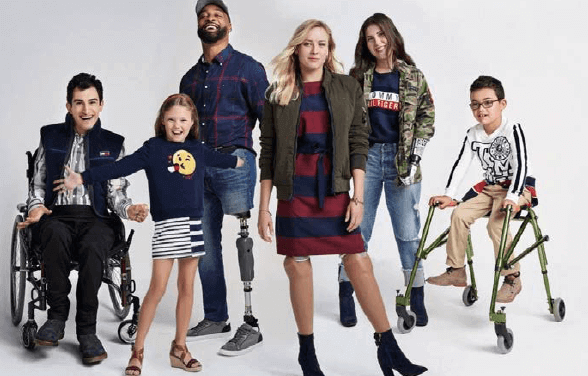 Adaptive clothes are specially designed
for people with a disability.
This can mean providing one-handed
zippers on shoes, replacing buttons
with magnetic closures or designing
clothing and footwear so you can get
dressed while in a seated position.
The key to effective adaptive clothing
is catering for the vast array of
needs different consumers have while
maintaining style and fashionability.
Recently, fashion brands have begun
to provide on-trend clothing with new
styles, combining fashion and technology
for people with a variety of disabilities.
Here are five different ways fashion
is approaching adaptive clothing. Adaptive clothes are specially designed
for people with a disability.
This can mean providing one-handed
zippers on shoes, replacing buttons
with magnetic closures or designing
clothing and footwear so you can get
dressed while in a seated position.
The key to effective adaptive clothing
is catering for the vast array of
needs different consumers have while
maintaining style and fashionability.
Recently, fashion brands have begun
to provide on-trend clothing with new
styles, combining fashion and technology
for people with a variety of disabilities.
Here are five different ways fashion
is approaching adaptive clothing. 1. Magnets, not buttons. Under
Armour were one of the first to adopt a
magnetic zipper in clothing. Their redesigned
jacket zip called MagZip uses
magnets to connect the ends of the zip,
making clothing easier to do up onehanded.
Magnets have also been used
in shirts, pants and other garments in
lieu of buttons. These enable individuals
who don’t have the dexterity to use
buttons to better dress themselves.
2. Shoes without laces. Different iterations
of shoes also aim to make the
process of tying laces easier or remove
the need altogether. Zips can replace
traditional laces, enabling shoes to be
done up one-handed. ... 3. Clothing for the wearer. Many
people with autism are sensitive to
certain fabrics or to tags and clothing
labels. Baby onesies and traditional
bathers which cover the stomach are
not always practical for everyone. Their
design can be restrictive to people who
are tube feed or use ostomy pouches.
Among other designs, Australian
adaptive clothing manufacturer Wonsie
sells garments with stomach access for
people who require medical devices.
4. 3D printing and custom designs.
In the past, adaptive products were
often designed to be unobtrusive, such
as black wheelchairs or flesh-coloured
prostheses and hearing aids. But this is
changing too. 3D printing and advanced
manufacturing are allowing for
great flexibility and customised designs
of various devices and fashion items.
5. Unique sales platforms. Every Human’s
Unpaired system allows consumers
to purchase single shoes while
searching by size, width and a range
of adaptive features such as easy to
put on, and friendly for those who are
wearing ankle/foot orthosis. This can
benefit people who have different sized
or shaped feet or with prosthetics,
where traditional shoes would not suit.
While it seems like a relatively simple
idea, this requires brands to have more
sophisticated ordering systems. Products
must be itemised individually, and
tagged with additional features such as
left or right shoe, and which adaptive
features each side possesses, so
consumers can search by their needs.
...
Read full text:
Adaptive clothes are specially designed
for people with a disability.
This can mean providing one-handed
zippers on shoes, replacing buttons
with magnetic closures or designing
clothing and footwear so you can get
dressed while in a seated position.
The key to effective adaptive clothing
is catering for the vast array of
needs different consumers have while
maintaining style and fashionability.
Recently, fashion brands have begun
to provide on-trend clothing with new
styles, combining fashion and technology
for people with a variety of disabilities.
Here are five different ways fashion
is approaching adaptive clothing. Adaptive clothes are specially designed
for people with a disability.
This can mean providing one-handed
zippers on shoes, replacing buttons
with magnetic closures or designing
clothing and footwear so you can get
dressed while in a seated position.
The key to effective adaptive clothing
is catering for the vast array of
needs different consumers have while
maintaining style and fashionability.
Recently, fashion brands have begun
to provide on-trend clothing with new
styles, combining fashion and technology
for people with a variety of disabilities.
Here are five different ways fashion
is approaching adaptive clothing. 1. Magnets, not buttons. Under
Armour were one of the first to adopt a
magnetic zipper in clothing. Their redesigned
jacket zip called MagZip uses
magnets to connect the ends of the zip,
making clothing easier to do up onehanded.
Magnets have also been used
in shirts, pants and other garments in
lieu of buttons. These enable individuals
who don’t have the dexterity to use
buttons to better dress themselves.
2. Shoes without laces. Different iterations
of shoes also aim to make the
process of tying laces easier or remove
the need altogether. Zips can replace
traditional laces, enabling shoes to be
done up one-handed. ... 3. Clothing for the wearer. Many
people with autism are sensitive to
certain fabrics or to tags and clothing
labels. Baby onesies and traditional
bathers which cover the stomach are
not always practical for everyone. Their
design can be restrictive to people who
are tube feed or use ostomy pouches.
Among other designs, Australian
adaptive clothing manufacturer Wonsie
sells garments with stomach access for
people who require medical devices.
4. 3D printing and custom designs.
In the past, adaptive products were
often designed to be unobtrusive, such
as black wheelchairs or flesh-coloured
prostheses and hearing aids. But this is
changing too. 3D printing and advanced
manufacturing are allowing for
great flexibility and customised designs
of various devices and fashion items.
5. Unique sales platforms. Every Human’s
Unpaired system allows consumers
to purchase single shoes while
searching by size, width and a range
of adaptive features such as easy to
put on, and friendly for those who are
wearing ankle/foot orthosis. This can
benefit people who have different sized
or shaped feet or with prosthetics,
where traditional shoes would not suit.
While it seems like a relatively simple
idea, this requires brands to have more
sophisticated ordering systems. Products
must be itemised individually, and
tagged with additional features such as
left or right shoe, and which adaptive
features each side possesses, so
consumers can search by their needs.
...
Read full text:
 Icons such as the Egg, Swan and
Womb chair apply textiles to concave
padded surfaces for comfort. This
requires the textile to be glued onto
foam to hold it in place. The foam is
then moulded over a structural frame
or surface, connecting three materials
together in a way that is almost
impossible to separate for repair or
recycling. The poor environmental
credentials of this material stack have
led to the Egg aesthetic disappearing
from contemporary design.
Now, ironically, in the case of these
iconic chairs, their cultural durability
means that they are cherished way
beyond their normal and expected
lifespans and, like classic cars, through
careful restoration, they may indeed last
forever. But what about the generations
of derivative products whose useful
life is so much shorter? They have
been incinerated or added to landfill.
...
Read full text
Icons such as the Egg, Swan and
Womb chair apply textiles to concave
padded surfaces for comfort. This
requires the textile to be glued onto
foam to hold it in place. The foam is
then moulded over a structural frame
or surface, connecting three materials
together in a way that is almost
impossible to separate for repair or
recycling. The poor environmental
credentials of this material stack have
led to the Egg aesthetic disappearing
from contemporary design.
Now, ironically, in the case of these
iconic chairs, their cultural durability
means that they are cherished way
beyond their normal and expected
lifespans and, like classic cars, through
careful restoration, they may indeed last
forever. But what about the generations
of derivative products whose useful
life is so much shorter? They have
been incinerated or added to landfill.
...
Read full text
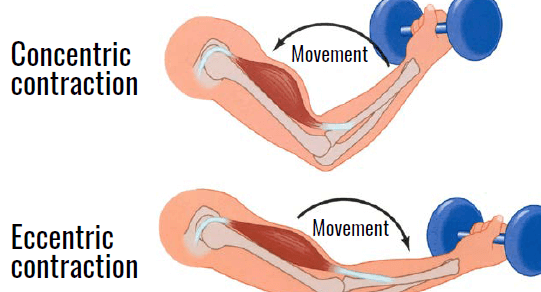 Researchers demonstrate a simple
exercise that could get results in
just three seconds a day.
When performed three days a week,
the surprisingly efficient move was
found to significantly improve both
concentric (when the muscle shortens)
and eccentric (when the muscle
lengthens) strength. That’s just nine
seconds a week, or 36 seconds a month,
of activity —surely one of the shortest
workouts that can grow muscle.
We know you’re probably dying to
know what this mystery move could
be, so we’ll put you out of your misery:
it’s maximum-effort eccentric biceps
contraction. Essentially, lowering a
heavy dumbbell from a bent arm to a
straight arm.
Previous research, also from Edith
Cowan University, has shown that this
exercise can improve muscle strength
when performed five days a week for
four weeks, but now it seems just thrice
might be sufficient to see some benefit.
“Our previous work has shown regular,
shorter exercise is more beneficial
than a one or two big training sessions
in a week,” study lead Professor Ken
Nosaka said in a statement.
“Now, we have a clearer idea of where
the tipping point is where you start to
see meaningful benefits from such a
minimal exercise. These new results
suggest at least three days a week are
required, at least for the single threesecond
eccentric contraction training.”
Nosaka and colleagues recruited 26
healthy ...
Read full text:
Researchers demonstrate a simple
exercise that could get results in
just three seconds a day.
When performed three days a week,
the surprisingly efficient move was
found to significantly improve both
concentric (when the muscle shortens)
and eccentric (when the muscle
lengthens) strength. That’s just nine
seconds a week, or 36 seconds a month,
of activity —surely one of the shortest
workouts that can grow muscle.
We know you’re probably dying to
know what this mystery move could
be, so we’ll put you out of your misery:
it’s maximum-effort eccentric biceps
contraction. Essentially, lowering a
heavy dumbbell from a bent arm to a
straight arm.
Previous research, also from Edith
Cowan University, has shown that this
exercise can improve muscle strength
when performed five days a week for
four weeks, but now it seems just thrice
might be sufficient to see some benefit.
“Our previous work has shown regular,
shorter exercise is more beneficial
than a one or two big training sessions
in a week,” study lead Professor Ken
Nosaka said in a statement.
“Now, we have a clearer idea of where
the tipping point is where you start to
see meaningful benefits from such a
minimal exercise. These new results
suggest at least three days a week are
required, at least for the single threesecond
eccentric contraction training.”
Nosaka and colleagues recruited 26
healthy ...
Read full text:
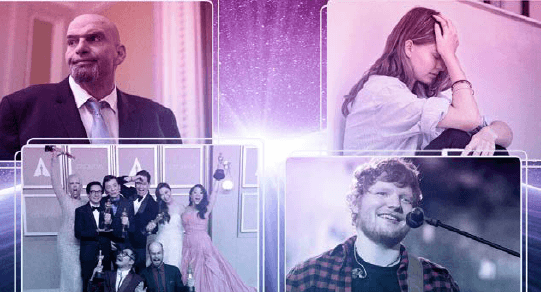 Most conversations about mental
health aren’t straightforward.
They’re often rich and rewarding, but
also complex, difficult, and even painful.
The same goes for the most impactful
mental health moments of 2023. There
have been triumphant events, like the
film Everything Everywhere All At Once,
with its message about the healing power
of connections. Stigma-defying moments,
including Sen. John Fetterman’s
decision to seek treatment for depression
and singer Ed Sheeran’s discussion
of his own mental health challenges,
have helped show the public that no one
should be ashamed to receive help.
But other turning points have been
more alarming than reassuring. U.S.
Surgeon General Dr. Vivek Murthy has
issued two separate advisories this year raising concerns about the loneliness
epidemic and youth social media use. A
chatbot meant to support people with
an eating disorder gave harmful suggestions
about weight loss and body
measurement instead.
In general, people may still feel the
effects of COVID pandemic isolation,
distress that may be compounded by
increasing hostility toward minority
groups and national tragedies, says Katie
Lee, director of communications at
Mental Health America. Lee notes that
anti-immigrant and anti-LGBTQ+ rhetoric,
mass shootings, and the violent
deaths of people of color have taken a
toll on people’s well-being, particularly
those targeted by hate speech and
discriminatory. ...
Read full text:
Most conversations about mental
health aren’t straightforward.
They’re often rich and rewarding, but
also complex, difficult, and even painful.
The same goes for the most impactful
mental health moments of 2023. There
have been triumphant events, like the
film Everything Everywhere All At Once,
with its message about the healing power
of connections. Stigma-defying moments,
including Sen. John Fetterman’s
decision to seek treatment for depression
and singer Ed Sheeran’s discussion
of his own mental health challenges,
have helped show the public that no one
should be ashamed to receive help.
But other turning points have been
more alarming than reassuring. U.S.
Surgeon General Dr. Vivek Murthy has
issued two separate advisories this year raising concerns about the loneliness
epidemic and youth social media use. A
chatbot meant to support people with
an eating disorder gave harmful suggestions
about weight loss and body
measurement instead.
In general, people may still feel the
effects of COVID pandemic isolation,
distress that may be compounded by
increasing hostility toward minority
groups and national tragedies, says Katie
Lee, director of communications at
Mental Health America. Lee notes that
anti-immigrant and anti-LGBTQ+ rhetoric,
mass shootings, and the violent
deaths of people of color have taken a
toll on people’s well-being, particularly
those targeted by hate speech and
discriminatory. ...
Read full text:
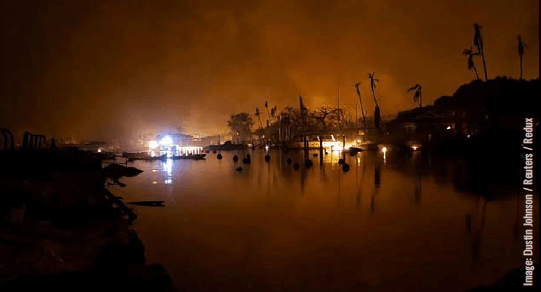 Like so many other places around the
world, the island of Maui is being
swept into the Age of Flames, also
known as the Pyrocene. In places where
fire is a natural part of the landscape,
wildfires now burn with ever greater
ferocity, oftentimes spawning their own
towering thunderclouds made of smoke,
or obliterating ecosystems instead of
resetting them for new growth. ...
Maui is in its dry season, but parts
of the island were already abnormally
parched, to the point of moderate or
severe drought, according to the US
Drought Monitor. Less moisture in
the landscape means that vegetation
dries out and piles up, ready to burn.
Dry winds exacerbate this problem by
scouring the landscape, sucking out
any moisture that might remain. In general, as the atmosphere warms with
climate change, the air gets thirstier
and thirstier, leading to further desiccation.
...
Historical factors have also conspired
to push Maui into the Pyrocene.
When Europeans arrived in the late 18th
century and established plantations
for growing sugarcane and pineapple,
they also brought invasive grasses.
Now the economics have changed, and
those fields lie fallow. But the grasses
have spread like a plague. “Those fireprone
invasive species fill in any gaps
anywhere else —roadsides, in between
communities, in between people’s
homes ...
Read full text:
Like so many other places around the
world, the island of Maui is being
swept into the Age of Flames, also
known as the Pyrocene. In places where
fire is a natural part of the landscape,
wildfires now burn with ever greater
ferocity, oftentimes spawning their own
towering thunderclouds made of smoke,
or obliterating ecosystems instead of
resetting them for new growth. ...
Maui is in its dry season, but parts
of the island were already abnormally
parched, to the point of moderate or
severe drought, according to the US
Drought Monitor. Less moisture in
the landscape means that vegetation
dries out and piles up, ready to burn.
Dry winds exacerbate this problem by
scouring the landscape, sucking out
any moisture that might remain. In general, as the atmosphere warms with
climate change, the air gets thirstier
and thirstier, leading to further desiccation.
...
Historical factors have also conspired
to push Maui into the Pyrocene.
When Europeans arrived in the late 18th
century and established plantations
for growing sugarcane and pineapple,
they also brought invasive grasses.
Now the economics have changed, and
those fields lie fallow. But the grasses
have spread like a plague. “Those fireprone
invasive species fill in any gaps
anywhere else —roadsides, in between
communities, in between people’s
homes ...
Read full text:
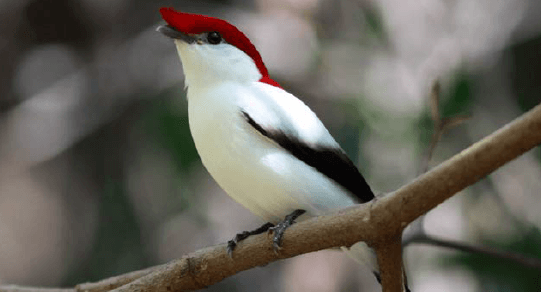 The Araripe manakin is a Brazilian
bird so unique and so threatened
that it has its own national conservation
action plan. The species, Antilophia
bokermanni, is endemic to the Chapada
do Araripe region of Ceará state, and
despite its beautiful contrasting colors
and the red topknot of the males, was
only described by science in 1998.
Its range is a very restricted 19 square
miles straddling the municipalities
of Crato, Barbalha and Missão Velha.
Because the bird nests near streams,
it’s known in the Caatinga biome as the
“Guardian of the Springs.” When the
Araripe manakin was formally described,
it was classified as critically endangered,
a status in which it has remained ever
since. Its current population is estimated
at approximately 800 individuals. That’s why this bird was one of the
highlights in a report presented in 2019
by Qair Brasil, a subsidiary of French
renewable energy developer when applying
for an environmental license to
build the Serra do Mato wind and solar
farm complex. The project lies in the
border region of Porteiras, Brejo Santo
and Missão Velha, which means it overlaps
with Araripe manakin territory.
... The most obvious risk posed by
wind turbines close to areas where such
birds occur is collision with the blades.
In the U.S., it’s estimated that more than
half a million birds die this way every
year. ... Under Brazil’s current environmental
legislation, the National Council
for the Environment requires ...
Read full text:
The Araripe manakin is a Brazilian
bird so unique and so threatened
that it has its own national conservation
action plan. The species, Antilophia
bokermanni, is endemic to the Chapada
do Araripe region of Ceará state, and
despite its beautiful contrasting colors
and the red topknot of the males, was
only described by science in 1998.
Its range is a very restricted 19 square
miles straddling the municipalities
of Crato, Barbalha and Missão Velha.
Because the bird nests near streams,
it’s known in the Caatinga biome as the
“Guardian of the Springs.” When the
Araripe manakin was formally described,
it was classified as critically endangered,
a status in which it has remained ever
since. Its current population is estimated
at approximately 800 individuals. That’s why this bird was one of the
highlights in a report presented in 2019
by Qair Brasil, a subsidiary of French
renewable energy developer when applying
for an environmental license to
build the Serra do Mato wind and solar
farm complex. The project lies in the
border region of Porteiras, Brejo Santo
and Missão Velha, which means it overlaps
with Araripe manakin territory.
... The most obvious risk posed by
wind turbines close to areas where such
birds occur is collision with the blades.
In the U.S., it’s estimated that more than
half a million birds die this way every
year. ... Under Brazil’s current environmental
legislation, the National Council
for the Environment requires ...
Read full text:
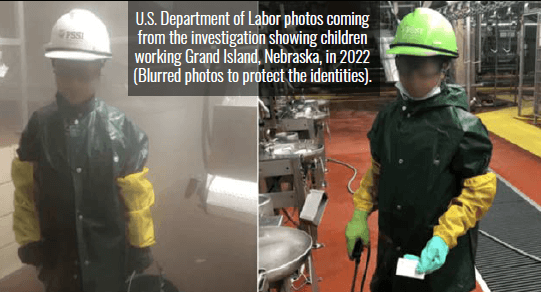 This Spring has seen timely attention
to the shocking use of child
labour in the U.S. However, this is only
the tip of the iceberg when it comes
to the current situation of children in
the U.S. and worldwide. Attention to
children waxes and wanes: Engels and
Dickens wrote about the deplorable,
even murderous, treatment of children
in ‘civilized’ Victorian England. Novelists,
child victims, Freud and Freudians,
attachment and infant researchers,
contribute much to understanding what
children endure, what they think, feel,
and need. What is described here is not
secret... This article summarizes recent
research on systemic policies since
1996 that have caused unprecedented
and unparalleled cruelty to racialized
and impoverished children in the U.S.
This system of extreme abuse is orchestrated by the courts and includes
collaborative and complementary
agencies. There is a deception of legal
legitimacy although the set-up violates
the constitutional separation of the
branches of government. Together, the
various agencies implement disastrously
unjust policies towards Black and other
racialized impoverished people.
Daniel L. Hatcher, in his book Injustice,
Inc. How America’s Justice System
Commodifies Children and the Poor,
describes in detail a frankly apartheid
system finely designed to milk every
source of revenue from poor children.
He describes “factory-like operations”,
“industrialization of harm”, “child support
mercenaries”. He quotes official
contracts that describe foster children
as “units” ...
This Spring has seen timely attention
to the shocking use of child
labour in the U.S. However, this is only
the tip of the iceberg when it comes
to the current situation of children in
the U.S. and worldwide. Attention to
children waxes and wanes: Engels and
Dickens wrote about the deplorable,
even murderous, treatment of children
in ‘civilized’ Victorian England. Novelists,
child victims, Freud and Freudians,
attachment and infant researchers,
contribute much to understanding what
children endure, what they think, feel,
and need. What is described here is not
secret... This article summarizes recent
research on systemic policies since
1996 that have caused unprecedented
and unparalleled cruelty to racialized
and impoverished children in the U.S.
This system of extreme abuse is orchestrated by the courts and includes
collaborative and complementary
agencies. There is a deception of legal
legitimacy although the set-up violates
the constitutional separation of the
branches of government. Together, the
various agencies implement disastrously
unjust policies towards Black and other
racialized impoverished people.
Daniel L. Hatcher, in his book Injustice,
Inc. How America’s Justice System
Commodifies Children and the Poor,
describes in detail a frankly apartheid
system finely designed to milk every
source of revenue from poor children.
He describes “factory-like operations”,
“industrialization of harm”, “child support
mercenaries”. He quotes official
contracts that describe foster children
as “units” ...
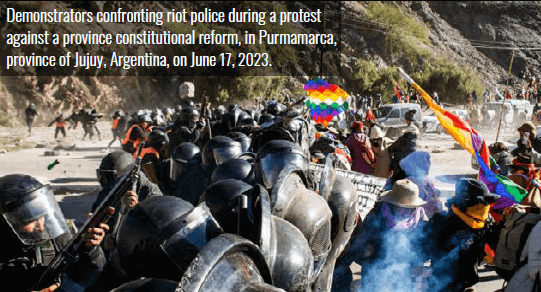 A pitched battle is taking place in
Argentina’s lithium-rich north that
has global implications with the worldwide
expansion of “green capitalism.”
On one side are Indigenous people,
teachers, young people, environmental
activists, and precarious workers. On
the other, the multinational lithium
interests and their Argentinian representatives
in government.
For nearly a month, the province
of Jujuy has gripped the attention of
the nation, with daily demonstrations
for salary raises and in rejection of an
authoritarian constitutional “reform”
imposed by the province’s governor,
Gerardo Morales. To date, activists are
maintaining over a dozen road blocks
throughout the region.
Police have cracked down heavily
on demonstrators, leaving at least 170 people injured, including a 17-year-old
boy who lost his eye after police shot
him in the face with a rubber bullet.
Authorities have also carried out widespread
arrests with 50 or more demonstrators
facing charges. Journalists and
human rights organizations have denounced
the presence of police infiltrators
in protests, illegal raids on homes,
the indiscriminate use of tear gas and
rubber bullets, among other abuses.
A significant number of those detained
during protests have been indigenous
people, women, and even children.
... At the center of these clashes
is a fight against the exploitation of
lithium resources by foreign multinationals.
While mining companies are
expanding extractive activity and ...
A pitched battle is taking place in
Argentina’s lithium-rich north that
has global implications with the worldwide
expansion of “green capitalism.”
On one side are Indigenous people,
teachers, young people, environmental
activists, and precarious workers. On
the other, the multinational lithium
interests and their Argentinian representatives
in government.
For nearly a month, the province
of Jujuy has gripped the attention of
the nation, with daily demonstrations
for salary raises and in rejection of an
authoritarian constitutional “reform”
imposed by the province’s governor,
Gerardo Morales. To date, activists are
maintaining over a dozen road blocks
throughout the region.
Police have cracked down heavily
on demonstrators, leaving at least 170 people injured, including a 17-year-old
boy who lost his eye after police shot
him in the face with a rubber bullet.
Authorities have also carried out widespread
arrests with 50 or more demonstrators
facing charges. Journalists and
human rights organizations have denounced
the presence of police infiltrators
in protests, illegal raids on homes,
the indiscriminate use of tear gas and
rubber bullets, among other abuses.
A significant number of those detained
during protests have been indigenous
people, women, and even children.
... At the center of these clashes
is a fight against the exploitation of
lithium resources by foreign multinationals.
While mining companies are
expanding extractive activity and ...
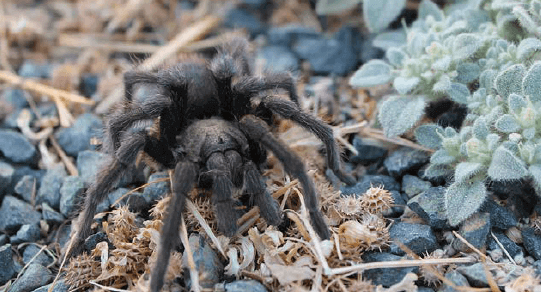 The California black tarantula
(Aphonopelma eutylenum) and the
San Diego bronze tarantula (Aphonopelmus
reversum) are the two species
in question —and while neither is
particularly dangerous to humans, they
can both deliver a nasty bite and have
hair that will irritate the skin.
Rural areas such as El Cajon, Ramona,
and Poway may be particularly
affected as potentially thousands of
these tarantulas appear and start
looking for love. “It’s like clockwork
—right around the middle of August.
There are two species of tarantulas in
San Diego, and both start their mating
season. Right around this time is
when the males are leaving their burrows
and they’re starting to look for
females,” said Cypress Hansen, Science Communications Manager at the San
Diego Natural History Museum in a
statement in CBS8 in 2022.
Males are most likely to be roaming
the streets but may not survive this
summer of love as they are occasionally
eaten by the females after mating.
Female tarantulas will make silk
cocoons for the eggs which could be
laid in numbers up from 75 to 1,000.
The female will even guard the eggs for
around 8 weeks until they hatch.
To get to that point though, the
males will tiptoe into the underground
lair of the female and attempt to transfer
sperm to her using his pedipalps.
“They use this glove-like apparatus to
dispel sperm, and then it deflates ...
The California black tarantula
(Aphonopelma eutylenum) and the
San Diego bronze tarantula (Aphonopelmus
reversum) are the two species
in question —and while neither is
particularly dangerous to humans, they
can both deliver a nasty bite and have
hair that will irritate the skin.
Rural areas such as El Cajon, Ramona,
and Poway may be particularly
affected as potentially thousands of
these tarantulas appear and start
looking for love. “It’s like clockwork
—right around the middle of August.
There are two species of tarantulas in
San Diego, and both start their mating
season. Right around this time is
when the males are leaving their burrows
and they’re starting to look for
females,” said Cypress Hansen, Science Communications Manager at the San
Diego Natural History Museum in a
statement in CBS8 in 2022.
Males are most likely to be roaming
the streets but may not survive this
summer of love as they are occasionally
eaten by the females after mating.
Female tarantulas will make silk
cocoons for the eggs which could be
laid in numbers up from 75 to 1,000.
The female will even guard the eggs for
around 8 weeks until they hatch.
To get to that point though, the
males will tiptoe into the underground
lair of the female and attempt to transfer
sperm to her using his pedipalps.
“They use this glove-like apparatus to
dispel sperm, and then it deflates ...
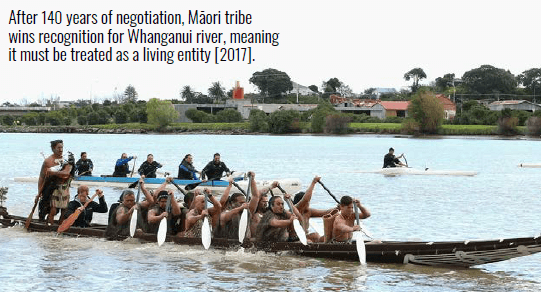 For Chuck O’Neal, a lifelong outdoorsman
and environmentalist,
the moment of truth came on election
night 2020, as results rolled in from
perhaps the most partisan campaign
season in American history.
O’Neal had spent the past two years
running a campaign in Orange County,
Florida, based on an unorthodox legal
doctrine that holds that rivers, mountains
and forests should have legal
rights, just like people. ...
The legal movement for the rights of
nature began with a seminal 1972 law
review article, Should Trees Have Standing,
by Christopher D. Stone, a law
professor at the University of Southern
California, who wrote that he was
“quite seriously proposing” giving legal
rights to nature.
The idea was famously taken up by Supreme Court Justice William O.
Douglas in a dissent in the case Sierra
Club v. Morton, but couldn’t muster
support from a majority of the court.
In the years since then, the concept
has surfaced globally in legislation,
judicial rulings and constitutional
amendments in countries that include
Canada, Mexico, France, Colombia,
Pakistan, Bangladesh, Bolivia, India,
New Zealand, Ecuador and Uganda.
At the United Nations, a Harmony With
Nature program has helped coordinate
and advance the movement, with nongovernmental
organizations playing a
leading role.
In the US, rights of nature laws have
taken root in more than 30 localities
across the country. Florida has become
an unlikely ...
For Chuck O’Neal, a lifelong outdoorsman
and environmentalist,
the moment of truth came on election
night 2020, as results rolled in from
perhaps the most partisan campaign
season in American history.
O’Neal had spent the past two years
running a campaign in Orange County,
Florida, based on an unorthodox legal
doctrine that holds that rivers, mountains
and forests should have legal
rights, just like people. ...
The legal movement for the rights of
nature began with a seminal 1972 law
review article, Should Trees Have Standing,
by Christopher D. Stone, a law
professor at the University of Southern
California, who wrote that he was
“quite seriously proposing” giving legal
rights to nature.
The idea was famously taken up by Supreme Court Justice William O.
Douglas in a dissent in the case Sierra
Club v. Morton, but couldn’t muster
support from a majority of the court.
In the years since then, the concept
has surfaced globally in legislation,
judicial rulings and constitutional
amendments in countries that include
Canada, Mexico, France, Colombia,
Pakistan, Bangladesh, Bolivia, India,
New Zealand, Ecuador and Uganda.
At the United Nations, a Harmony With
Nature program has helped coordinate
and advance the movement, with nongovernmental
organizations playing a
leading role.
In the US, rights of nature laws have
taken root in more than 30 localities
across the country. Florida has become
an unlikely ...

 Created with a slim,
versatile design, the Löv
features a triple filter
(pre-filter, carbon and
HEPA). This air purifier
weighs a little under
eight pounds and can be
hung on the wall, placed
vertically or horizontally
on a stand.
store.moma.org
Created with a slim,
versatile design, the Löv
features a triple filter
(pre-filter, carbon and
HEPA). This air purifier
weighs a little under
eight pounds and can be
hung on the wall, placed
vertically or horizontally
on a stand.
store.moma.org
 Durable rolling
scooter for weeding, farming, or gardening.
It has storage space beneath the
seat for garden tools, and features a 360°
swivel motion. www.homedepot.com
Durable rolling
scooter for weeding, farming, or gardening.
It has storage space beneath the
seat for garden tools, and features a 360°
swivel motion. www.homedepot.com

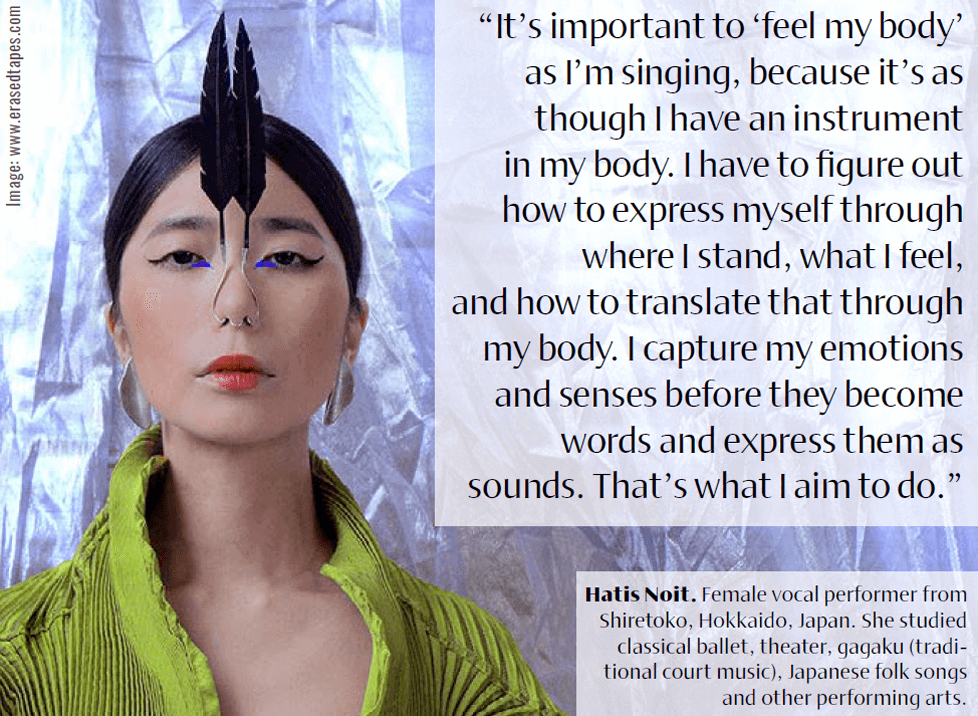 “It’s important to ‘feel my body’
as I’m singing, because it’s as
though I have an instrument
in my body. I have to figure out
how to express myself through
where I stand, what I feel,
and how to translate that through
my body. I capture my emotions
and senses before they become
words and express them as
sounds. That’s what I aim to do.”
“It’s important to ‘feel my body’
as I’m singing, because it’s as
though I have an instrument
in my body. I have to figure out
how to express myself through
where I stand, what I feel,
and how to translate that through
my body. I capture my emotions
and senses before they become
words and express them as
sounds. That’s what I aim to do.”
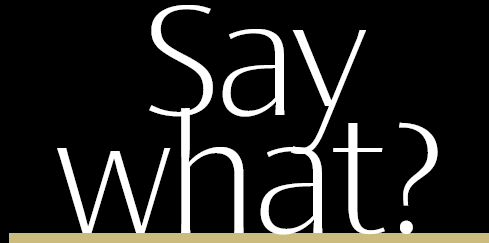
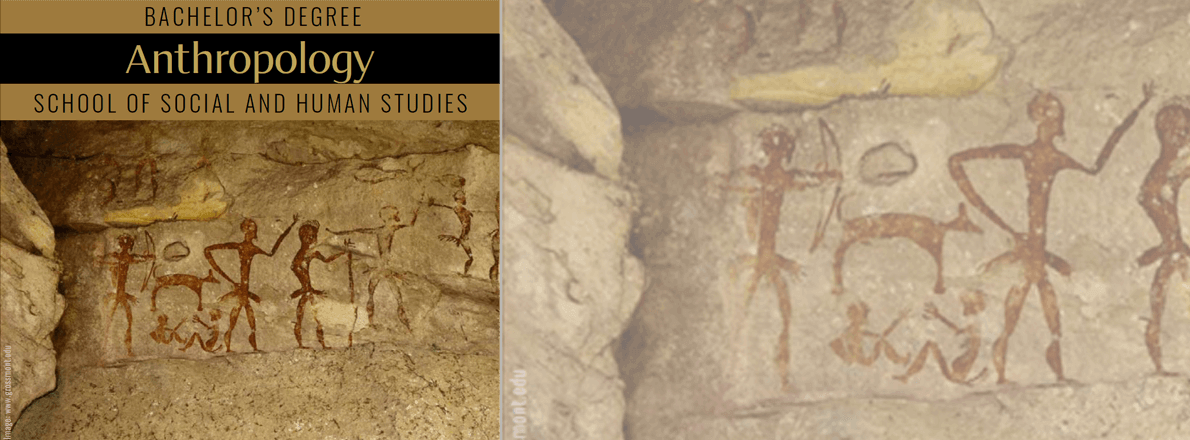 The objective of the Bachelor’s
Program in Anthropology is to
study human diversity taking as a
main component the analysis of the
corporeality of the human being, that
is, the link that exists between the
human body as a biological entity
and the social and cultural spheres.
Anthropology studies emphasize the
interaction between the biological
and social processes that shape the
human being.
Our program does not require every
student to study the same subjects and
use the same books and other learning
materials as every other student.
If you are a purpose-driven individual
who wants to elevate their life and
make a solid contribution to the world,
then this program is for you.
The objective of the Bachelor’s
Program in Anthropology is to
study human diversity taking as a
main component the analysis of the
corporeality of the human being, that
is, the link that exists between the
human body as a biological entity
and the social and cultural spheres.
Anthropology studies emphasize the
interaction between the biological
and social processes that shape the
human being.
Our program does not require every
student to study the same subjects and
use the same books and other learning
materials as every other student.
If you are a purpose-driven individual
who wants to elevate their life and
make a solid contribution to the world,
then this program is for you.
 Atlantic International University is accredited by the Accreditation Service for International
Schools, Colleges and Universities (ASIC). ASIC Accreditation is an internationally
renowned quality standard for colleges and universities. Visit ASIC’s Directory of Accredited
Colleges and Universities. ASIC is a member of CHEA International Quality Group
(CIQG) in the USA, an approved accreditation body by the Ministerial Department of the Home Office
in the UK, and is listed in the International Directory of the Council for Higher Education Accreditation
(CHEA). The University is based in the United States and was established by corporate charter in 1998.
Atlantic International University is accredited by the Accreditation Service for International
Schools, Colleges and Universities (ASIC). ASIC Accreditation is an internationally
renowned quality standard for colleges and universities. Visit ASIC’s Directory of Accredited
Colleges and Universities. ASIC is a member of CHEA International Quality Group
(CIQG) in the USA, an approved accreditation body by the Ministerial Department of the Home Office
in the UK, and is listed in the International Directory of the Council for Higher Education Accreditation
(CHEA). The University is based in the United States and was established by corporate charter in 1998.
 In some cases, accredited colleges
may not accept for transfer courses and degrees
completed at unaccredited colleges, and some
employers may require an accredited degree as
a basis for eligibility for employment. Potential
students should consider how the above may affect
their interests, AIU respects the unique rules and
regulations of each country and does not seek to
influence the respective authorities. In the event
that a prospective student wishes to carry out any
government review or process in regards to his
university degree, we recommend that the requirements
of such are explored in detail with the relevant
authorities by the prospective student as the
university does not intervene in such processes.
AIU students can be found in over 180 countries,
they actively participate and volunteer
in their communities as part of their academic
program and have allocated thousands of service
hours to diverse causes and initiatives. AIU
programs follow the standards commonly used by
colleges and universities in the United States with
regards to the following: academic program
structure, degree issued, transcript, and
other graduation documents.
AIU graduation documents can include
an apostille and authentication from the
US Department of State to facilitate their
use internationally.
In some cases, accredited colleges
may not accept for transfer courses and degrees
completed at unaccredited colleges, and some
employers may require an accredited degree as
a basis for eligibility for employment. Potential
students should consider how the above may affect
their interests, AIU respects the unique rules and
regulations of each country and does not seek to
influence the respective authorities. In the event
that a prospective student wishes to carry out any
government review or process in regards to his
university degree, we recommend that the requirements
of such are explored in detail with the relevant
authorities by the prospective student as the
university does not intervene in such processes.
AIU students can be found in over 180 countries,
they actively participate and volunteer
in their communities as part of their academic
program and have allocated thousands of service
hours to diverse causes and initiatives. AIU
programs follow the standards commonly used by
colleges and universities in the United States with
regards to the following: academic program
structure, degree issued, transcript, and
other graduation documents.
AIU graduation documents can include
an apostille and authentication from the
US Department of State to facilitate their
use internationally.
| Dr. Franklin Valcin Presi den t/Academic Dean |
Dr. José Mercado Chief Executive Officer Chairman of the Board of Trustees |
Ricardo González, PhD Provost |
| Dr. Ricardo Gonzalez Chief Operation Officer and MKT Director |
Linda Collazo Logistics Coordinator |
AIU Tutors Coordinators: Deborah Rodriguez Amiakhor Ejaeta Amanda Gutierrez William Mora Miriam James Admissions Coordinators: Amalia Aldrett Sandra Garcia Junko Shimizu Veronica Amuz Alba Ochoa Jenis Garcia Judith Brown Chris Soto René Cordón Dr. Anderas Rissler Academic Coordinators: Dr. Adesida Oluwafemi Dr. Emmanuel Gbagu Dr. Lucia Gorea Dr. Edgar Colon Dr. Mario Rios Freddy Frejus Dr. Nilani Ljunggren De Silva Dr. Scott Wilson Dr. Mohammad Shaidul Islam |
| Dr. Miriam Garibaldi Vice provost for Research |
Carolina Valdes Human Resource Coordinator |
|
| Dr. Ofelia Miller Director of AIU |
Carlos Aponte Teleco mmunications Coordinator |
|
| Clara Margalef Director of Special Projects of AIU |
David Jung Corporate/Legal Counsel |
|
| Juan Pablo Moreno Director of Operations |
Bruce Kim Advisor/Consultant |
|
| Paula Viera Director of Intelligence Systems |
Thomas Kim Corporate/ Accounting Counsel |
|
| Felipe Gomez Design Director / IT Supervisor |
Maricela Esparza Administrative Coordinator |
|
| Kevin Moll Web Designer |
Chris Benjamin IT and Hosting Support |
|
| Daritza Ysla IT Coordinator |
Maria Pastrana Accounting Coordinator |
|
| Daritza Ysla IT Coordinator |
Roberto Aldrett Communications Coordinator |
|
| Nadeem Awan Chief Programming Officer |
Giovanni Castillo IT Support |
|
| Dr. Edward Lambert Academic Director |
Antonella Fonseca Quality Control & Data Analysis |
|
| Dr. Ariadna Romero Advisor Coordinator |
Adrián Varela Graphic Design |
|
| Jhanzaib Awan Senior Programmer |
Vanesa D’Angelo Content Writer |
|
| Leonardo Salas Human Resource Manager |
Jaime Rotlewicz Dean of Admissions |
|
| Benjamin Joseph IT and Technology Support |
Michael Phillips Registrar’s Office |
|
| Rosie Perez Finance Coordinator |
||
 The School of Business and Economics
allows aspiring and practicing
professionals, managers, and entrepreneurs
in the private and public sectors
to complete a self paced distance
learning degree program of the highest
academic standard.
The ultimate goal is to empower
learners and help them take advantage
of the enormous array of resources
from the world environment in order
to eliminate the current continuum of
poverty and limitations.
Degree programs are designed for
those students whose professional experience has been in business,
marketing, administration, economics,
finance and management.
The School of Business and Economics
allows aspiring and practicing
professionals, managers, and entrepreneurs
in the private and public sectors
to complete a self paced distance
learning degree program of the highest
academic standard.
The ultimate goal is to empower
learners and help them take advantage
of the enormous array of resources
from the world environment in order
to eliminate the current continuum of
poverty and limitations.
Degree programs are designed for
those students whose professional experience has been in business,
marketing, administration, economics,
finance and management.
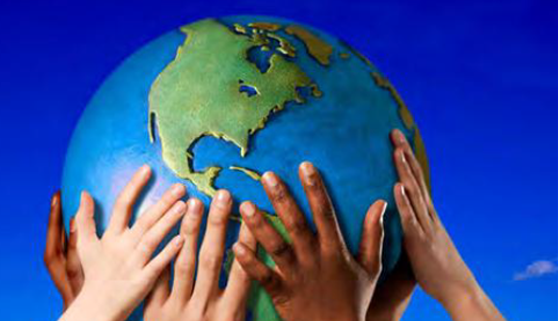 The School of Social and Human Studies
is focused on to the development of
studies which instill a core commitment
to building a society based on social and
economic justice and enhancing opportunities
for human well being.
The founding principles lie on the
basic right of education as outlined
in the Declaration of Human Rights.
We instill in our students a sense of
confidence and self reliance in their
ability to access the vast opportunities
available through information channels,
the world wide web, private, public,
nonprofit, and nongovernmental organizations in an ever expanding
global community.
Degree programs are aimed towards
those whose professional life has been
related to social and human behavior,
with the arts, or with cultural studies.
The School of Social and Human Studies
is focused on to the development of
studies which instill a core commitment
to building a society based on social and
economic justice and enhancing opportunities
for human well being.
The founding principles lie on the
basic right of education as outlined
in the Declaration of Human Rights.
We instill in our students a sense of
confidence and self reliance in their
ability to access the vast opportunities
available through information channels,
the world wide web, private, public,
nonprofit, and nongovernmental organizations in an ever expanding
global community.
Degree programs are aimed towards
those whose professional life has been
related to social and human behavior,
with the arts, or with cultural studies.
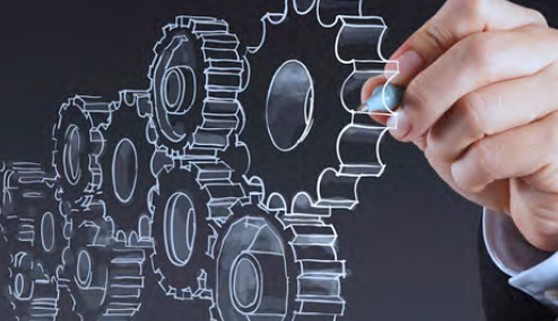 The School of Science and Engineering
seeks to provide dynamic, integrated,
and challenging degree programs
designed for those whose experience
is in industrial research, scientific production,
engineering and the general
sciences. Our system for research and
education will keep us apace with the
twenty-first century reach scientific
advance in an environmentally and
ecologically responsible manner to allow
for the sustainability of the human
population. We will foster among our
students a demand for ethical behavior,
an appreciation for diversity, an understanding
of scientific investigation, knowledge of design innovation, a
critical appreciation for the importance
of technology and technological change
for the advancement of humanity.
The School of Science and Engineering
seeks to provide dynamic, integrated,
and challenging degree programs
designed for those whose experience
is in industrial research, scientific production,
engineering and the general
sciences. Our system for research and
education will keep us apace with the
twenty-first century reach scientific
advance in an environmentally and
ecologically responsible manner to allow
for the sustainability of the human
population. We will foster among our
students a demand for ethical behavior,
an appreciation for diversity, an understanding
of scientific investigation, knowledge of design innovation, a
critical appreciation for the importance
of technology and technological change
for the advancement of humanity.
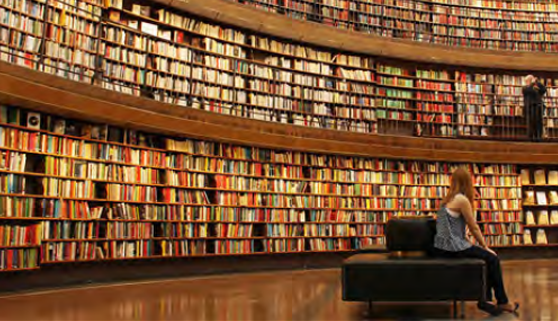 With access to a global catalog created and maintained collectively by more than
9,000 participating institutions, AIU students have secured excellent research
tools for their study programs.
With access to a global catalog created and maintained collectively by more than
9,000 participating institutions, AIU students have secured excellent research
tools for their study programs.